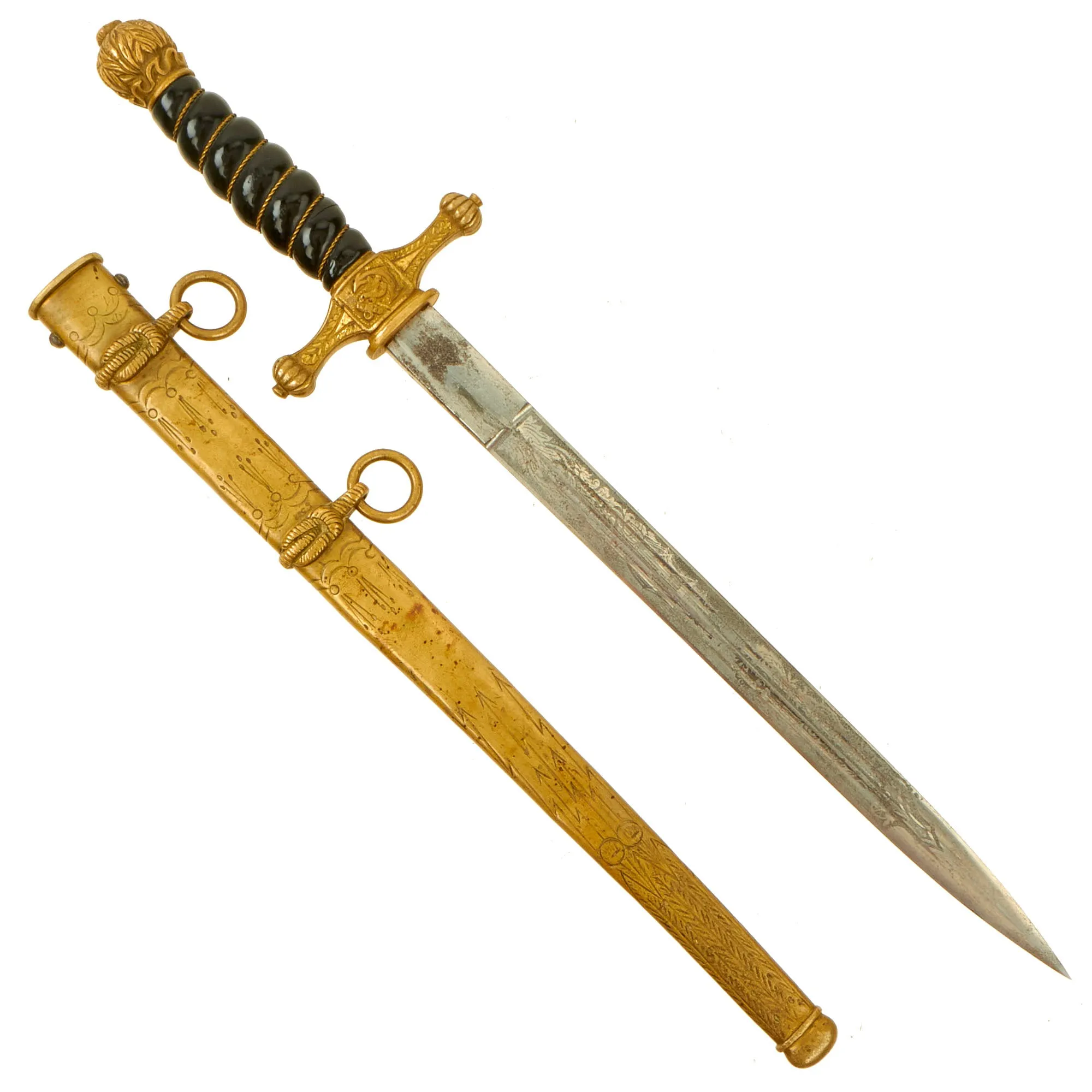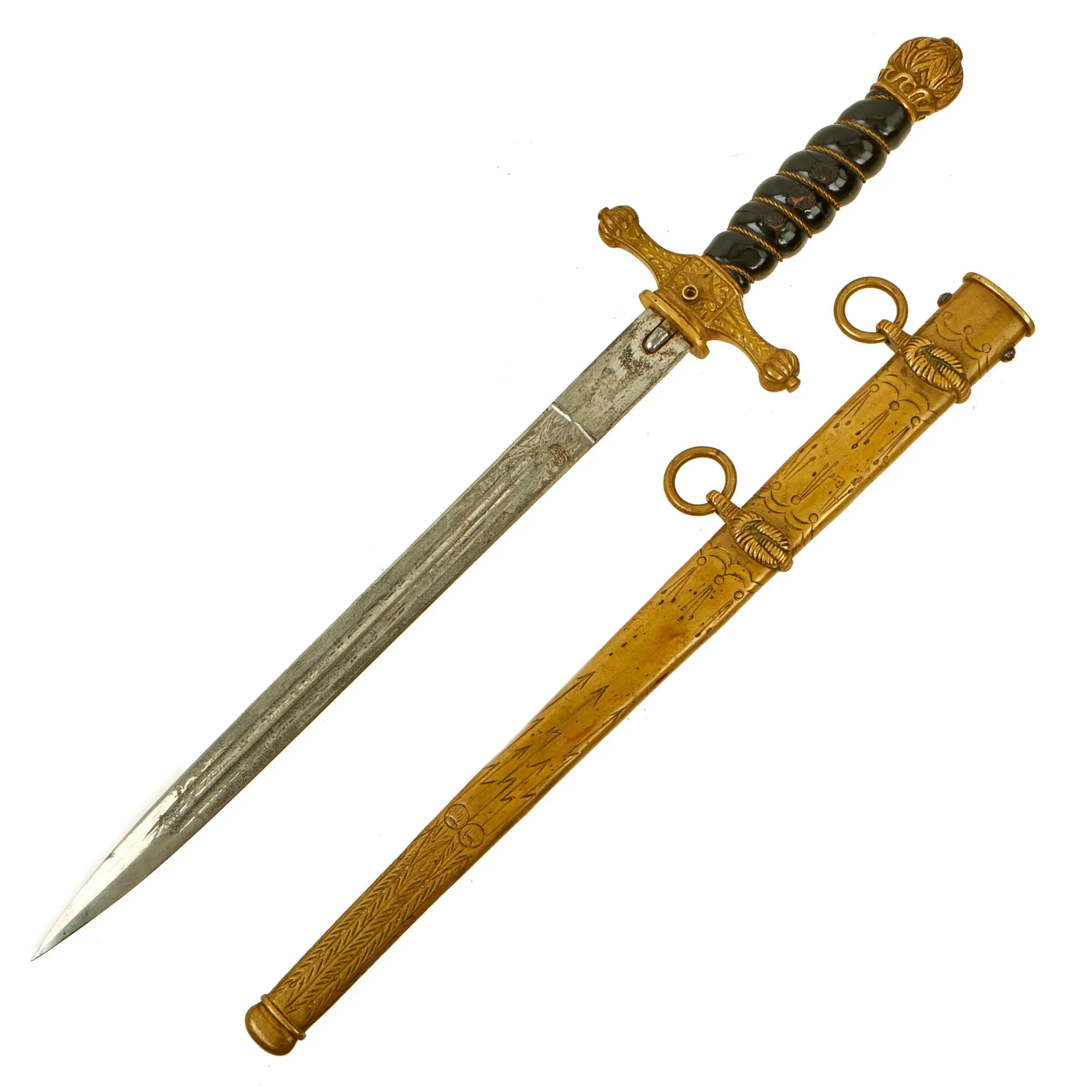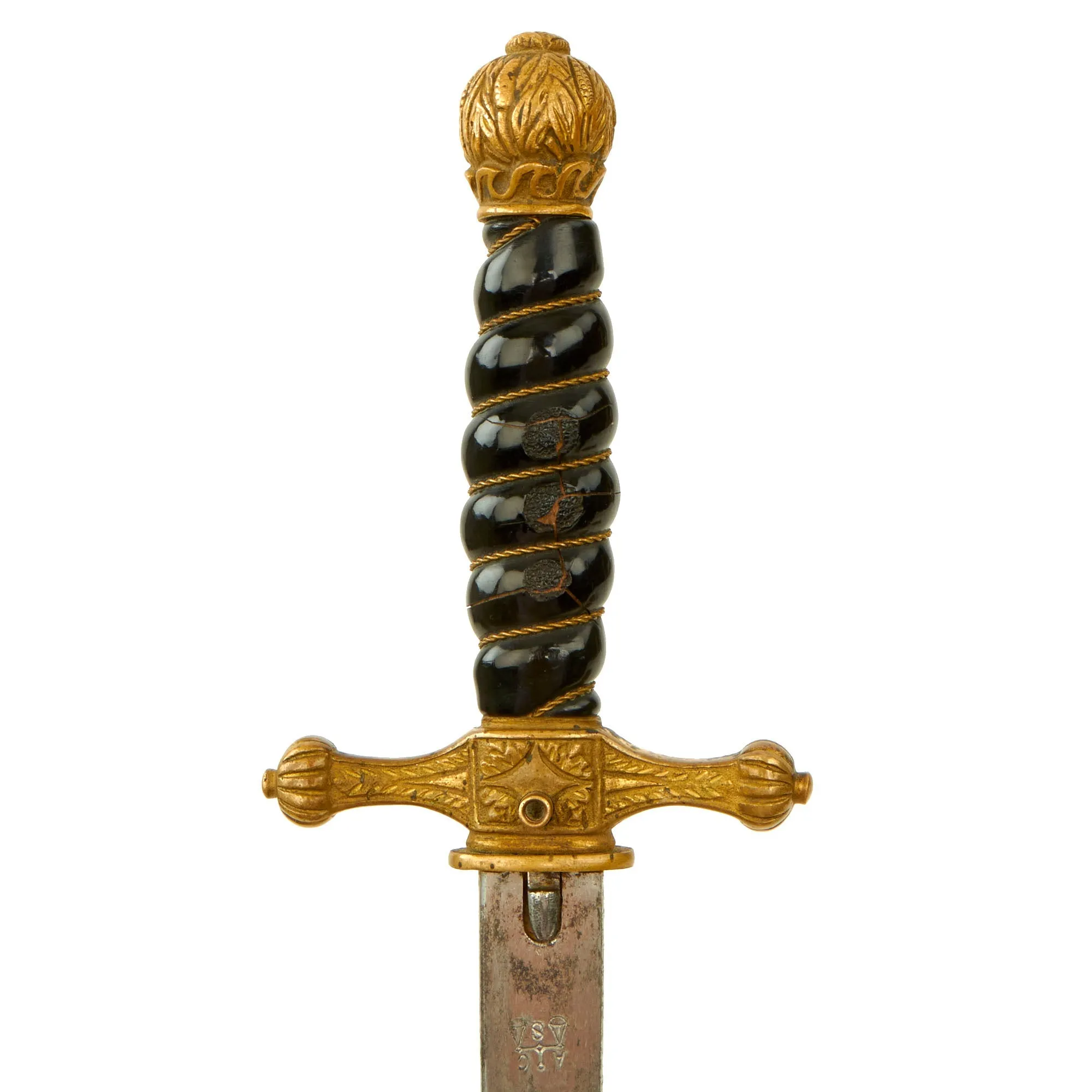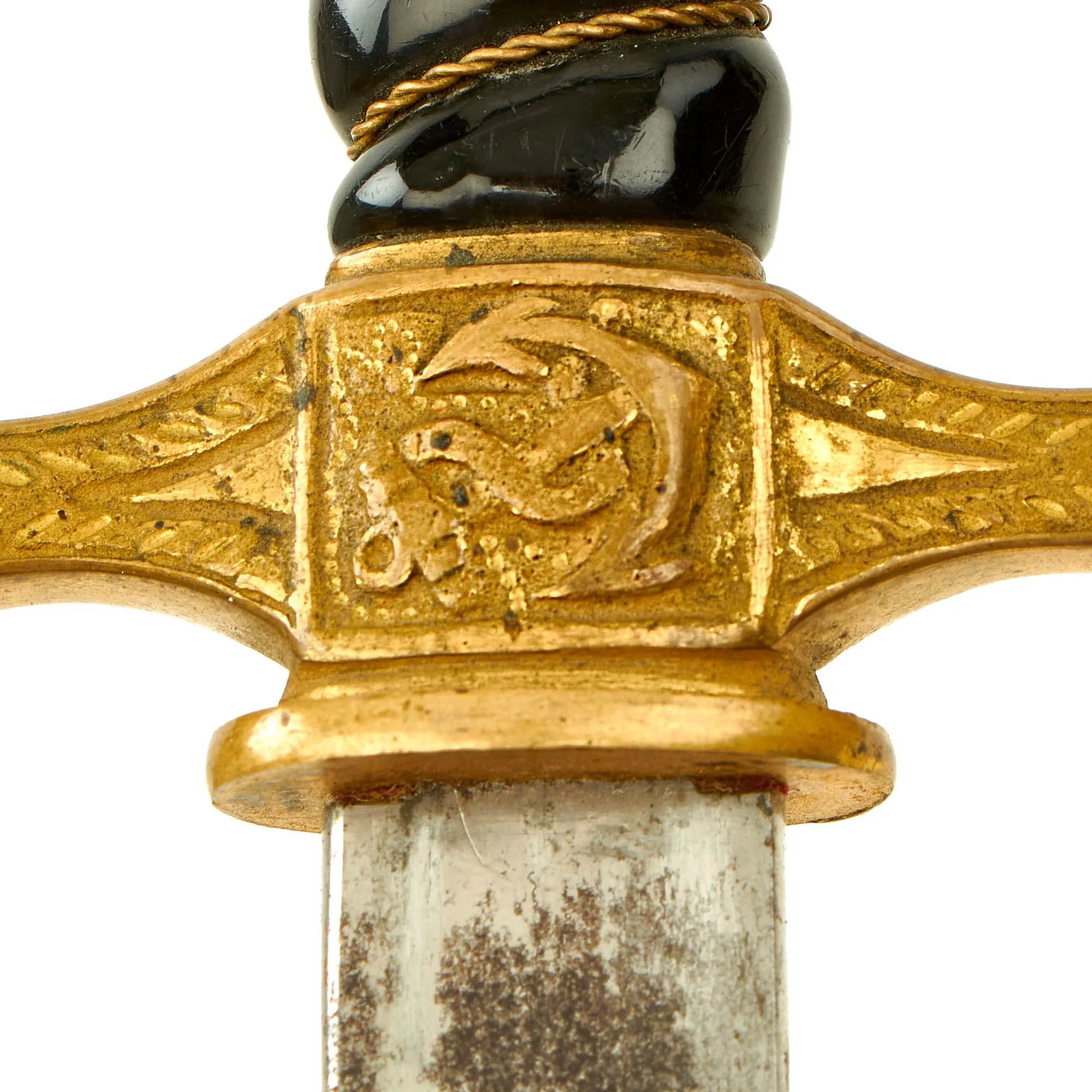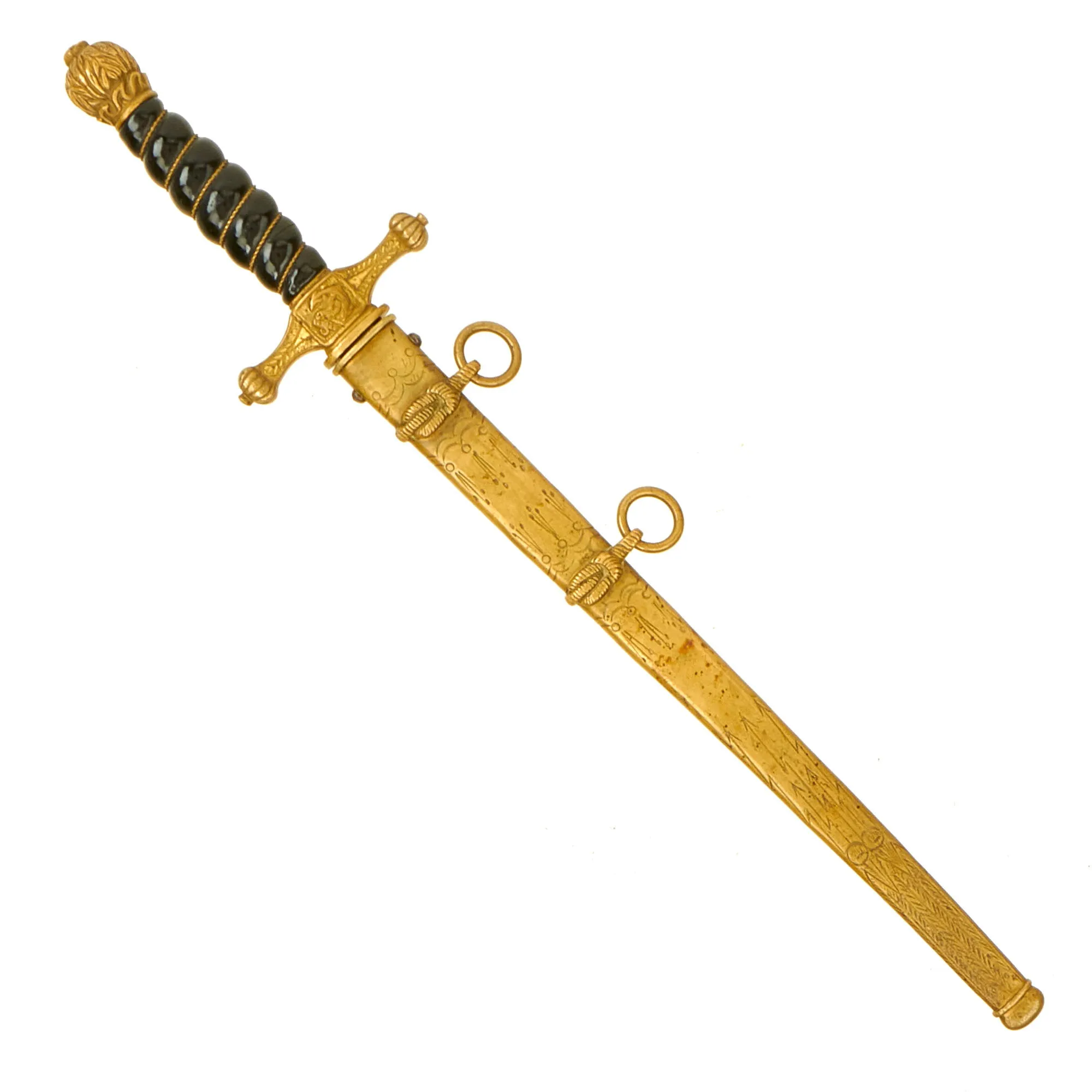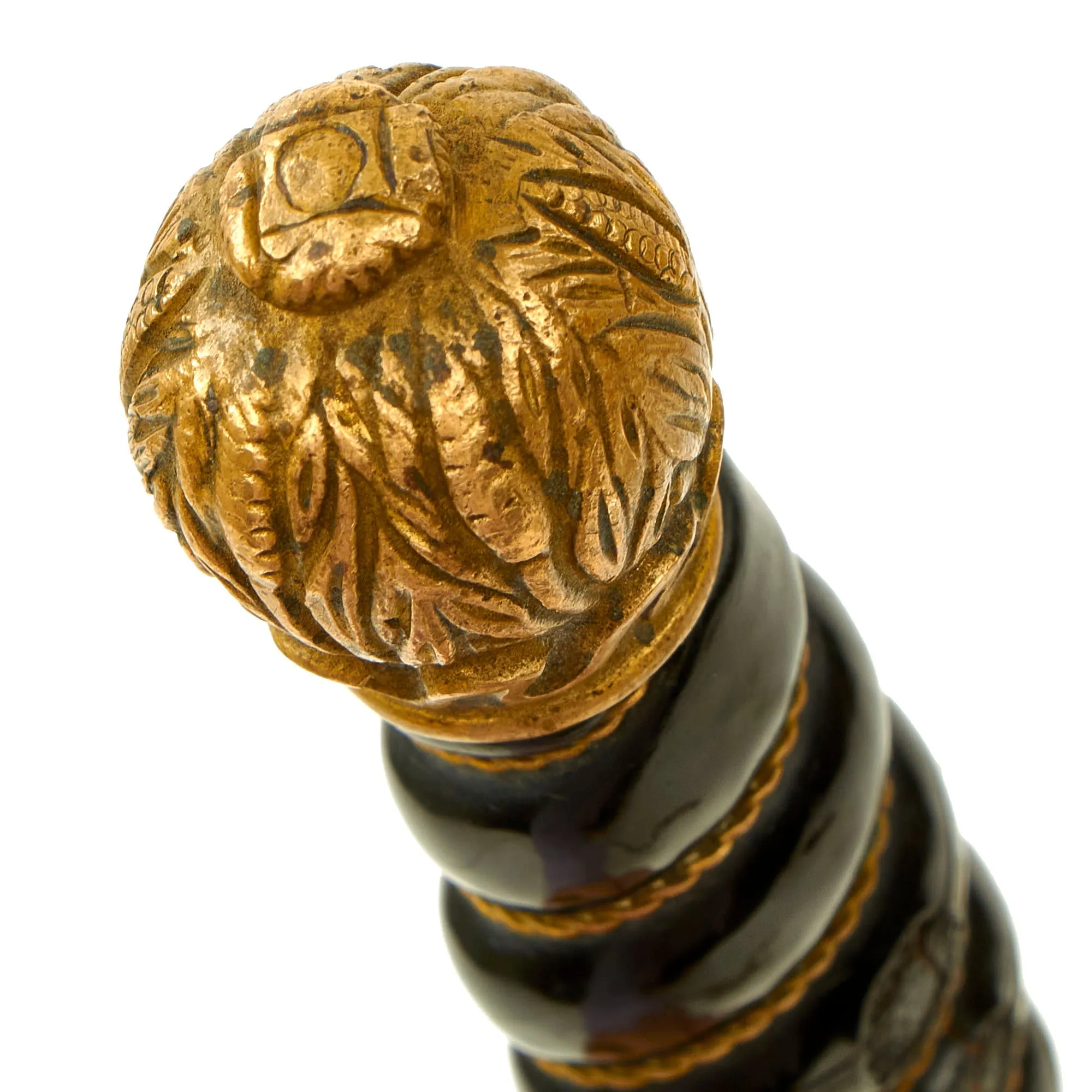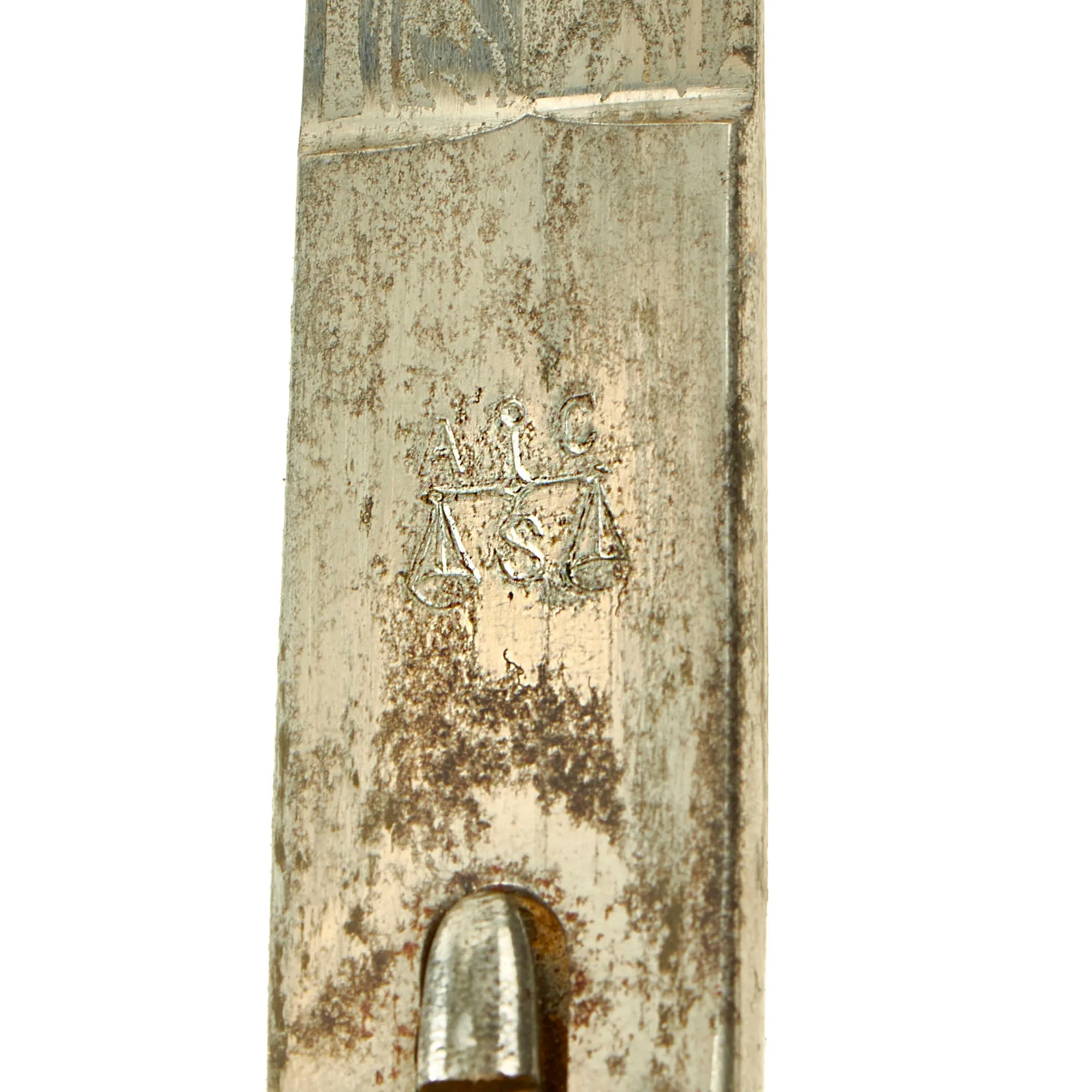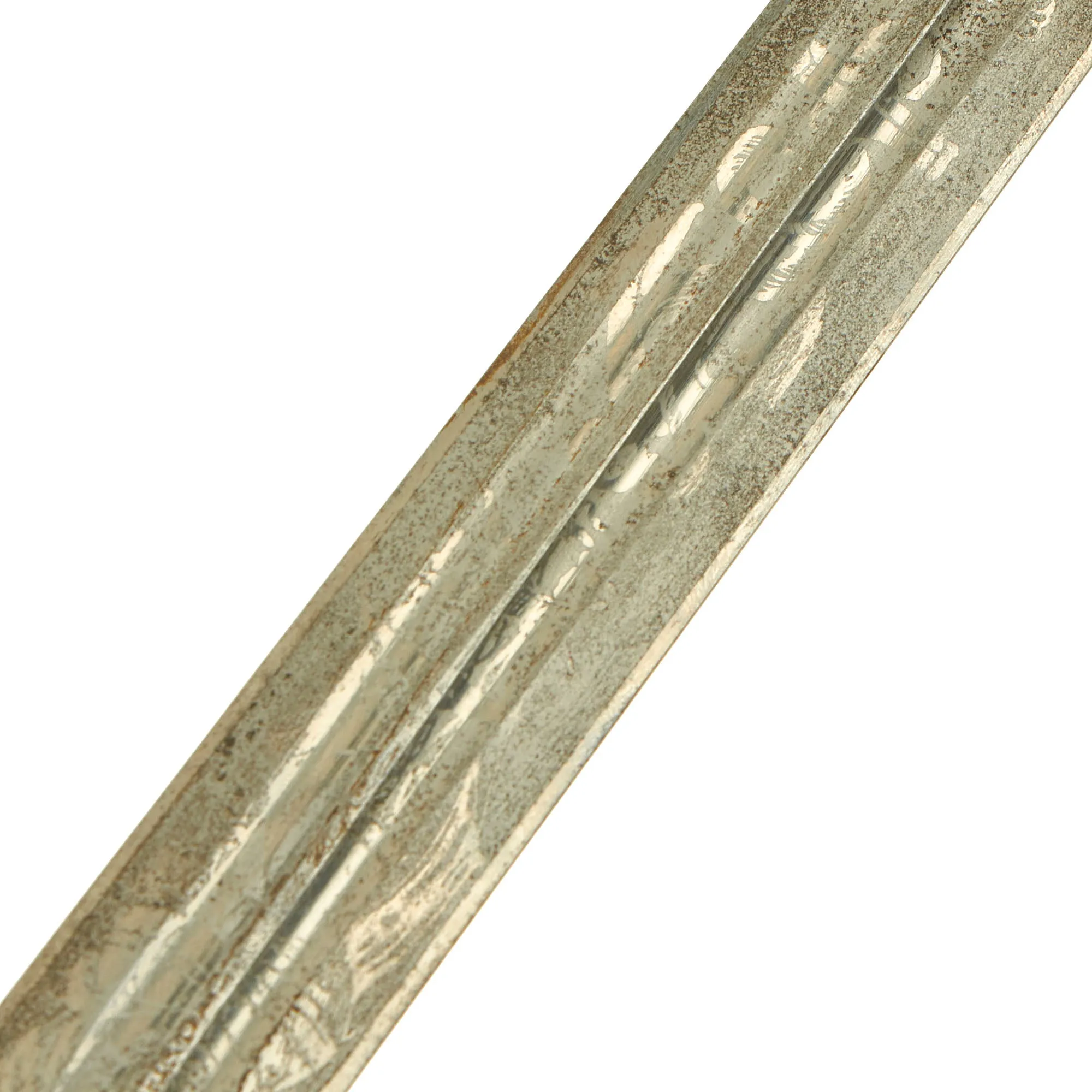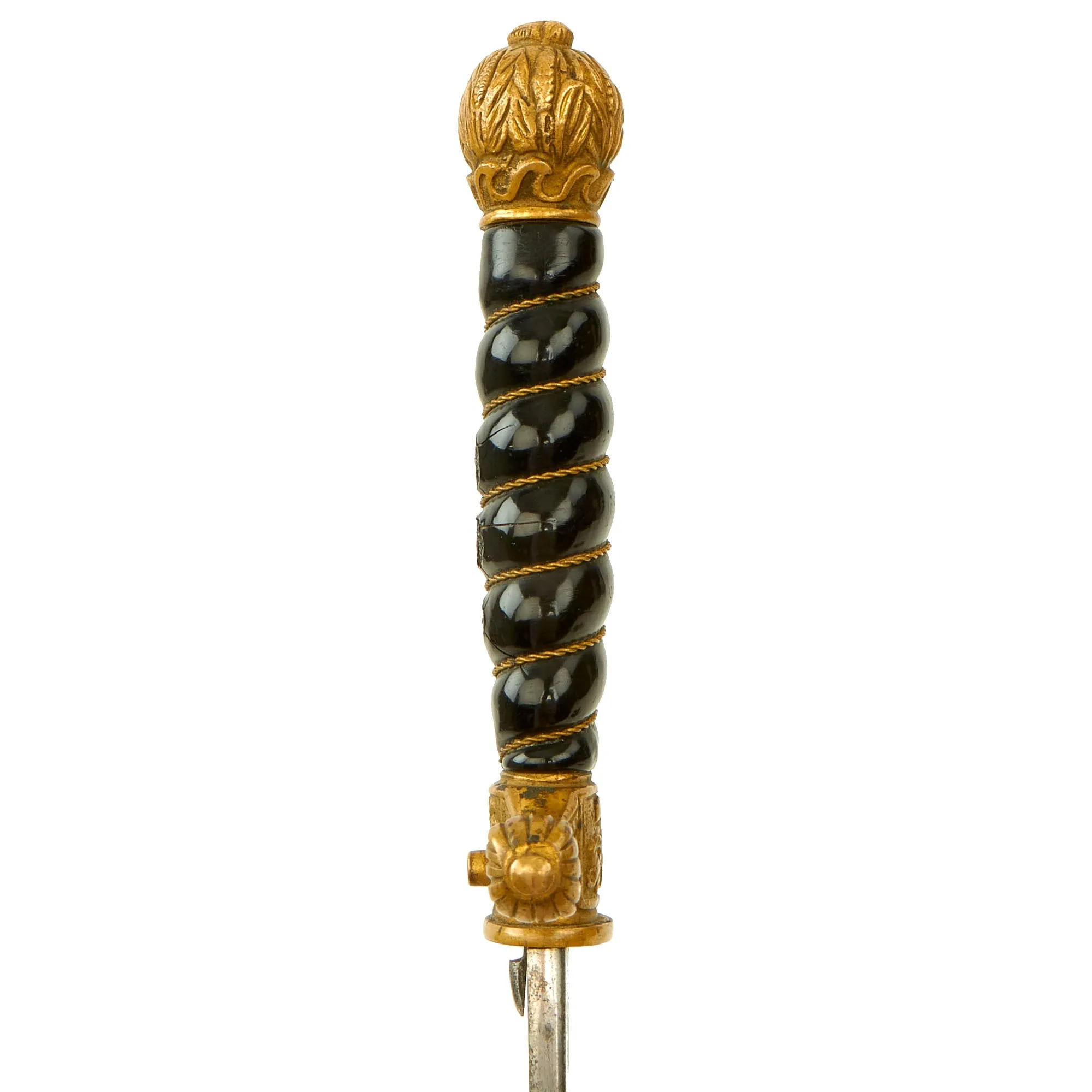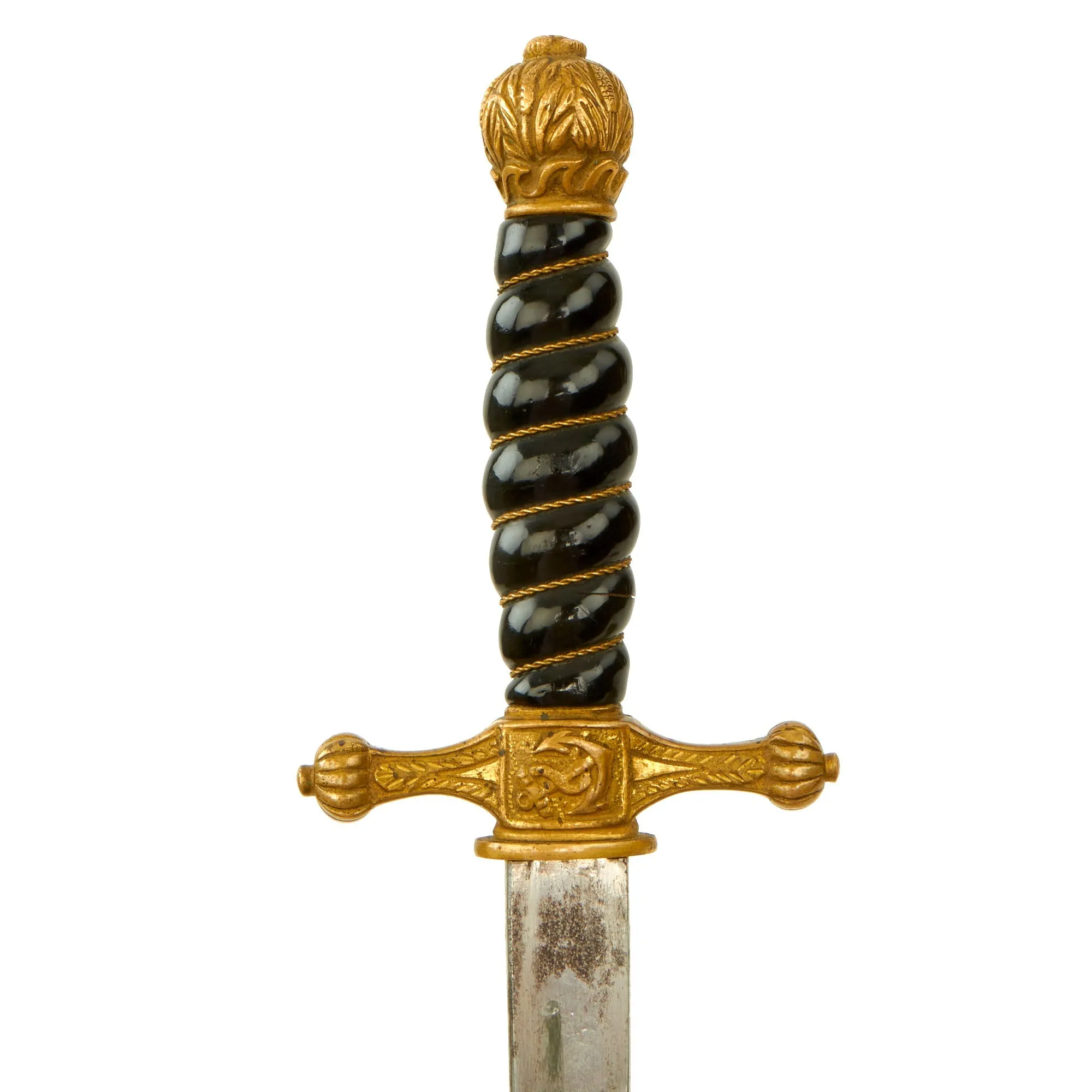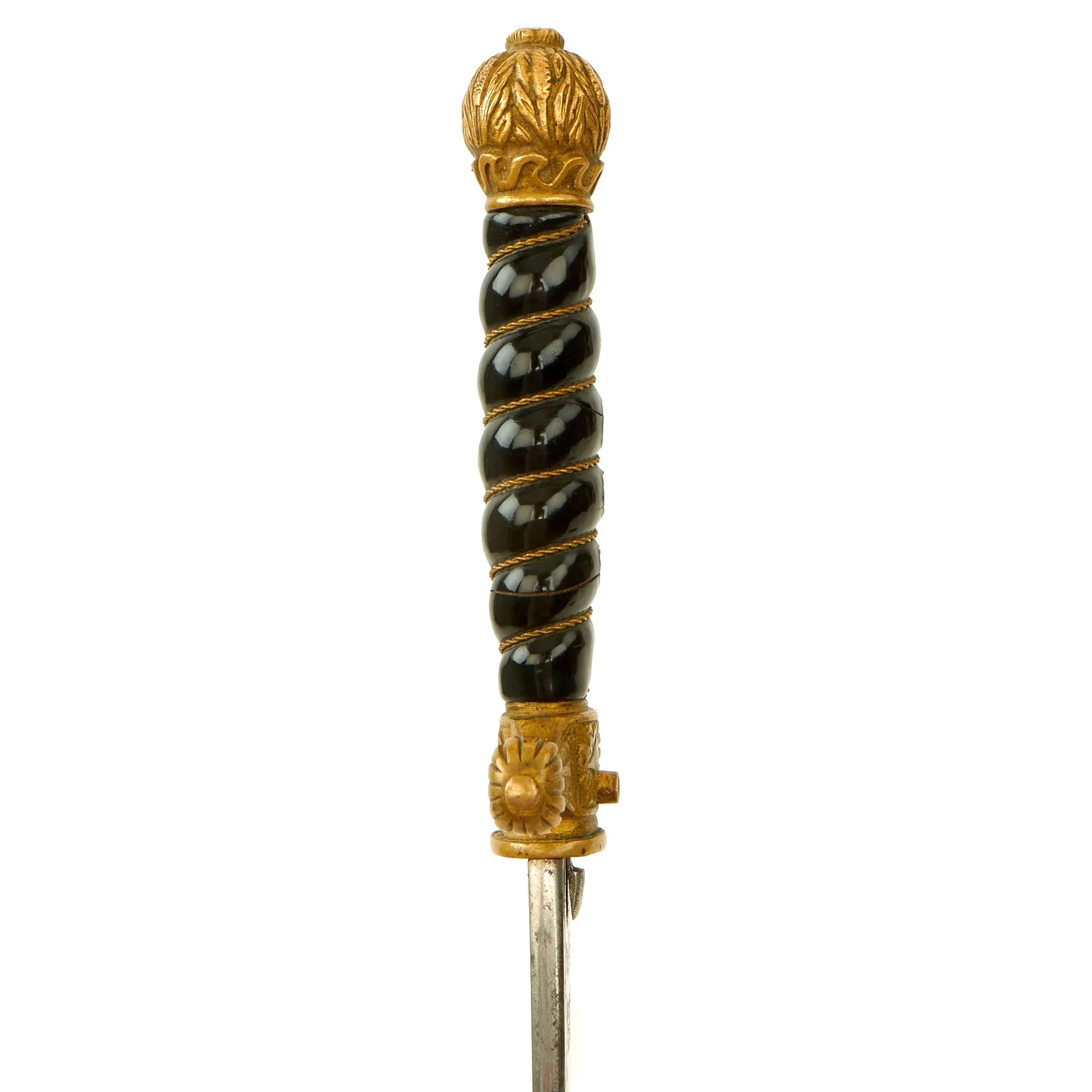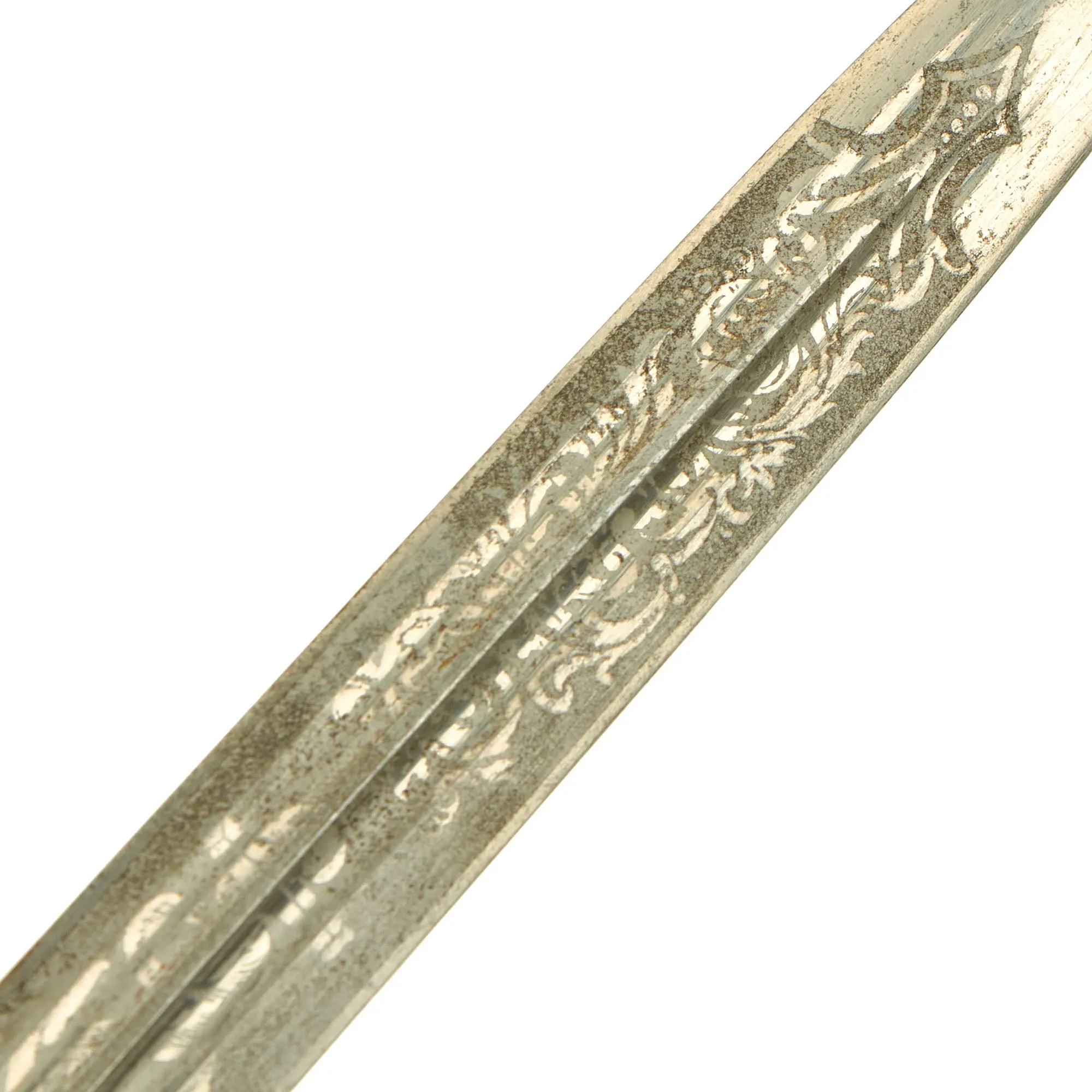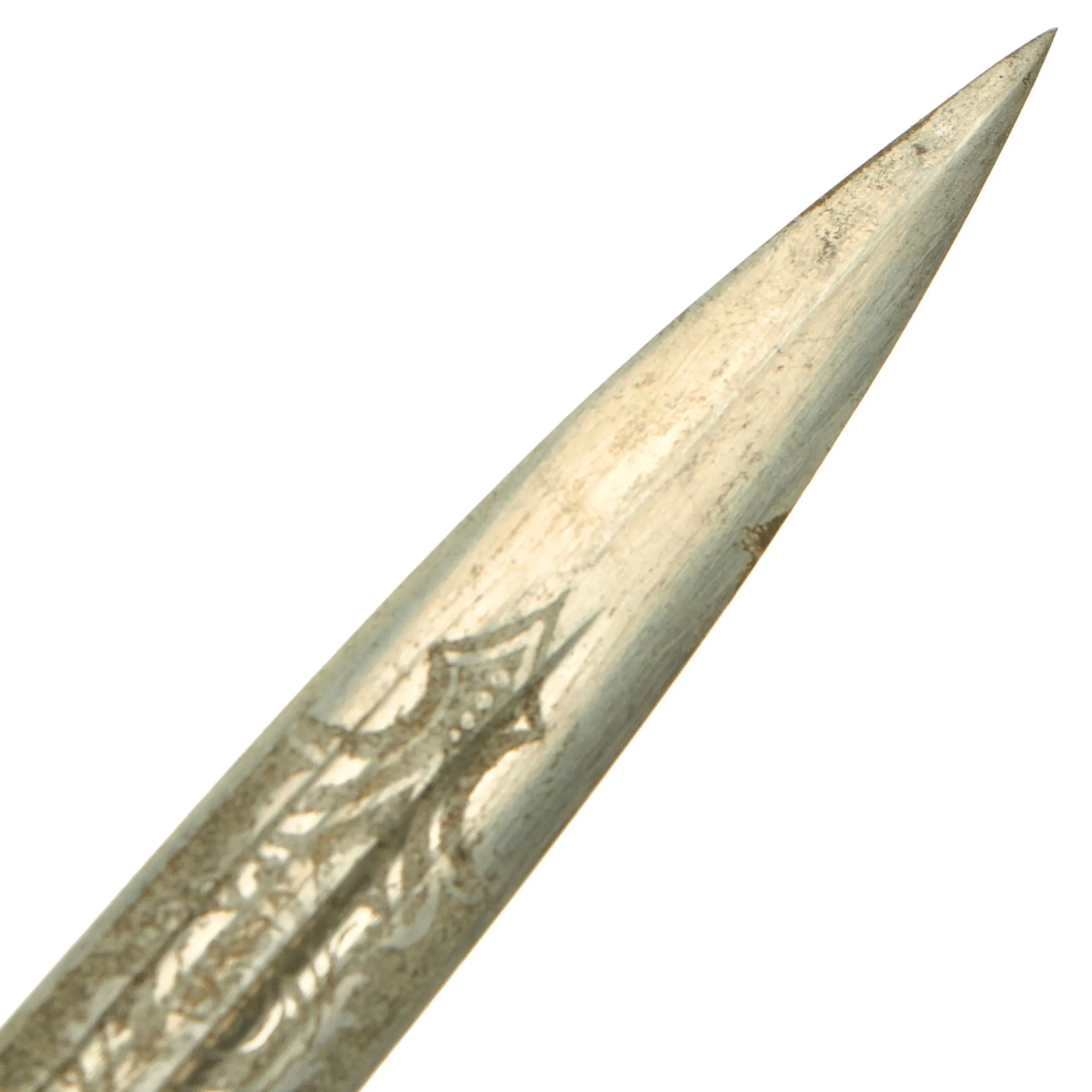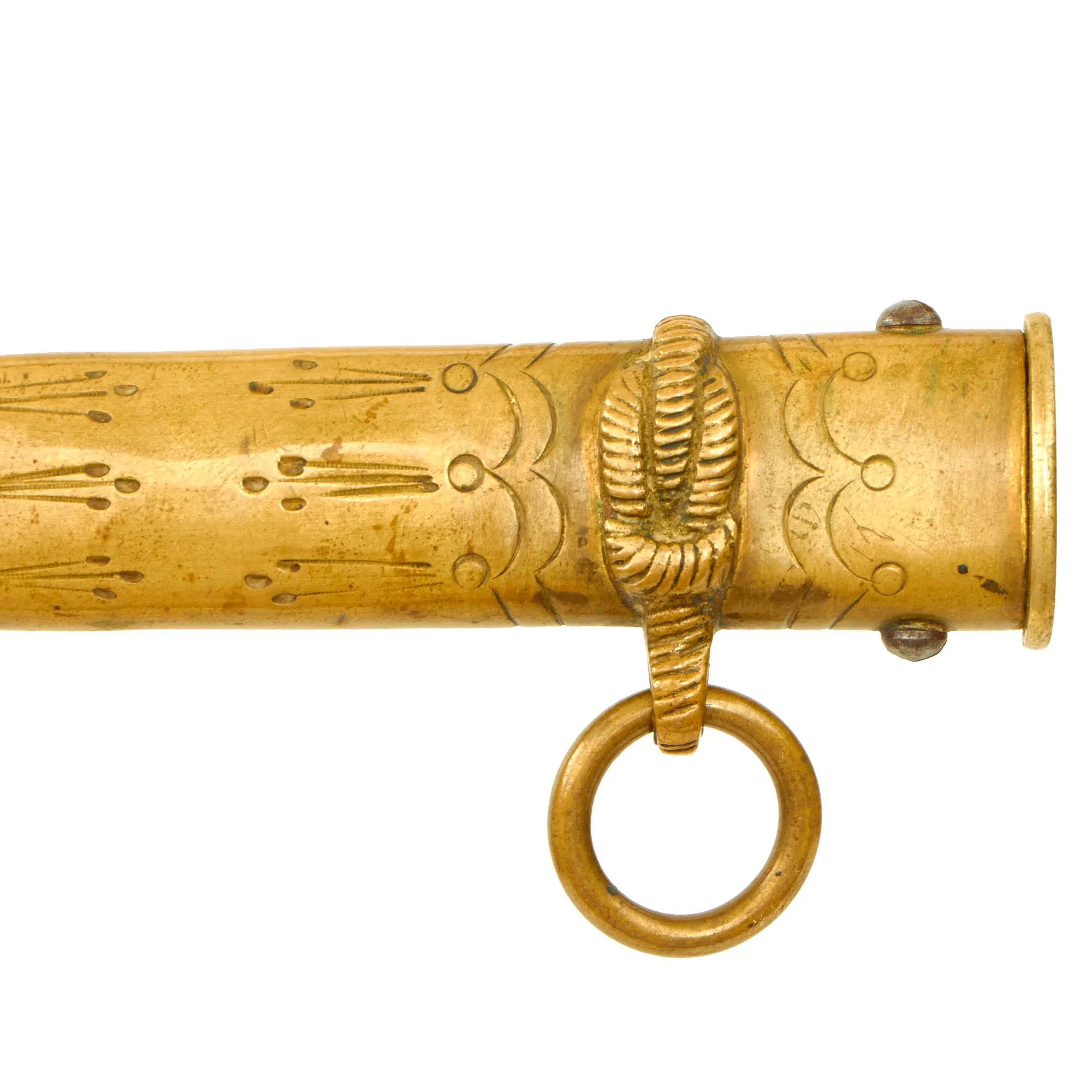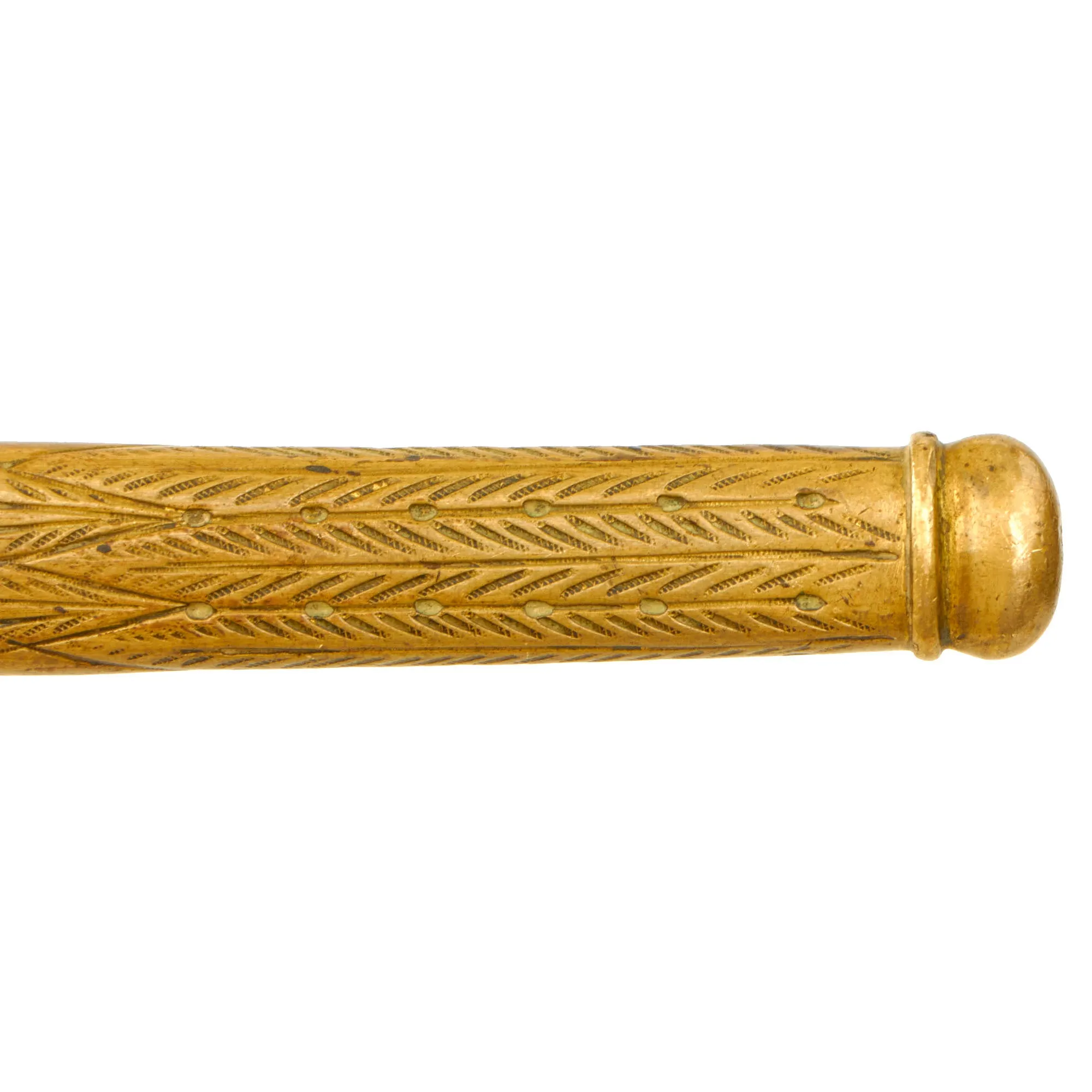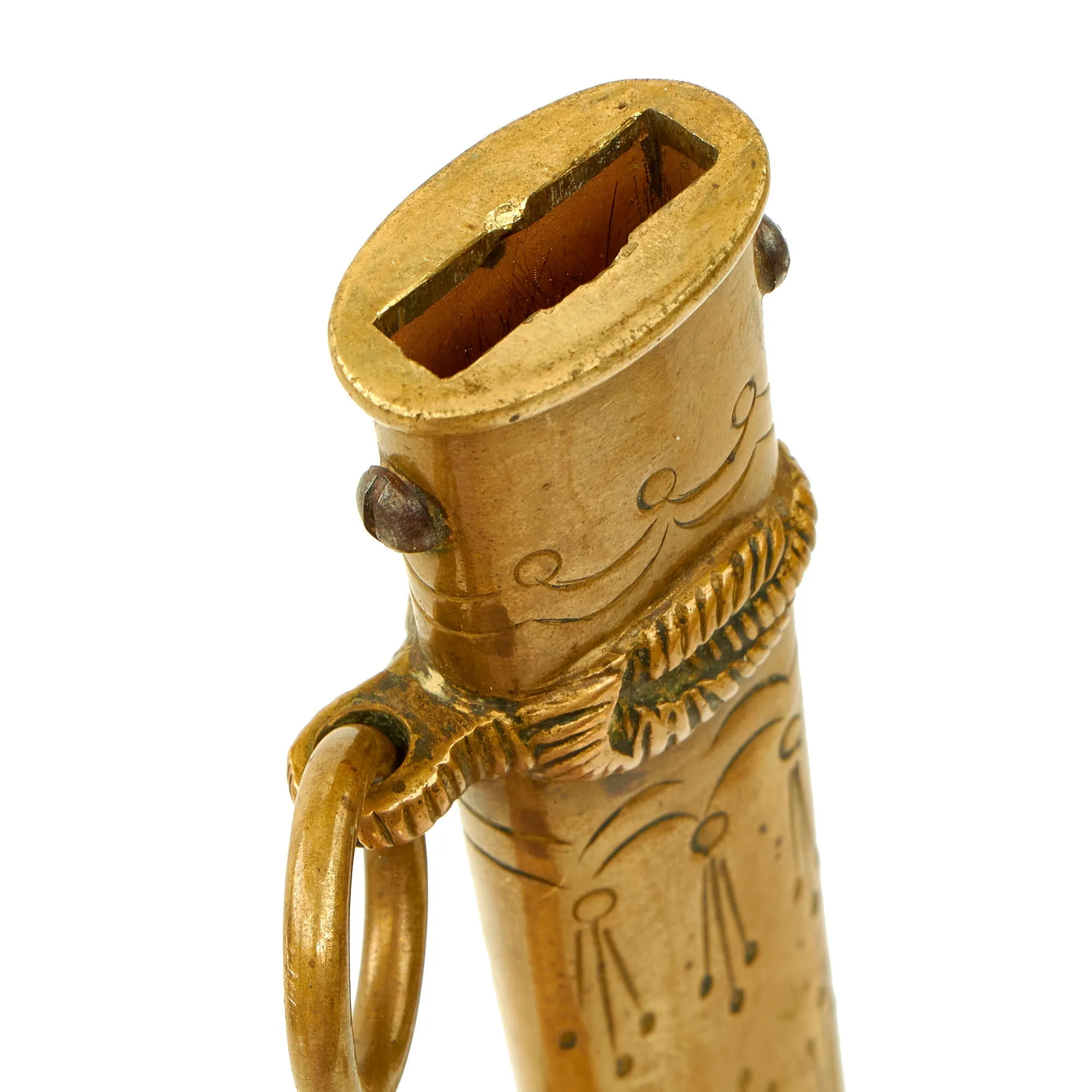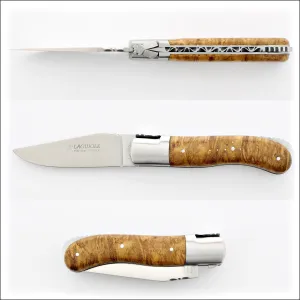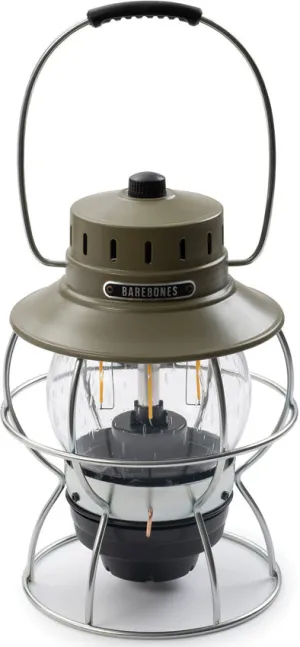Original Item: Only One Available. This is a rare Solingen-Produced totally original German Weimar Period Model 1919/1921 Naval Dagger by Alexander Coppel & Co. KG, complete with the original plated "lightning bolt" brass scabbard. This is a very nice service used example, with a very nice etched carbon steel blade, and is the first example of this rare dagger that we have had.
The Model 1919/1921 is equipped with a rounded pommel attachment, as used during the German Imperial period, and features a black celluloid covered wooden grip, wrapped in twisted brass wires. This dagger would be replaced with the very similar Model 1929 late in the Weimar period, which featured an ivory colored grip, but was otherwise very similar, and would remain the standard German Naval dagger until 1938, well into the NSDAP period.
This fine example was almost certainly purchased by a high ranking officer during the Weimar period, probably during the mid 1920s. The crossguard is the standard brass type with a fouled anchor panel on the front, with a release button on the rear (button top is missing). The grip is in very good condition, with the black celluloid cover well retained, except om some spots where it looks to have been resting on something. This caused the celluloid to degrade and crack in those spots. The twisted brass wire wrapping is in excellent tight condition. The scabbard locking button is fully functional, though it can require some effort to get it to unlock at times.
The blade is a very good example, with a lovely fouled anchor etch on both sides of the bright steel blade. The etching on both sides is very nice shape, retaining almost all of the frosted backgrounds. There is light overall wear, and some light staining, very common on naval daggers with carbon steel blades. The tip of the blade is straight and unbent, however the original felt blade buffer is missing. There also is some oxidation to the blade near the cross guard on both sides.
The blade ricasso is marked with the Alexander Coppel trade trademark scales logo, with the firm's initials ACS interspersed. This type of trademark was used dress daggers and bayonets during the Weimar republic and up into the beginning of the NSDAP era, up until around 1940, per J. Anthony Carter's work GERMAN KNIFE AND SWORD MAKERS.
Alexander Coppel & Co. KG, Stahlwarenfabrik (Steelware Factory), was located in Solingen, the legendary German "City of Blades." The company was a major manufacturer of edged weapons and tools from the end of the 19th century up until the WWII period. Unfortunately, as NSDAP-control increased, brothers Carl Gustav and Dr. Alexander Coppel, the Jewish owners of the firm, were forced out. In 1936 the firm had been "Aryanized", and started using the name ALCOSO to hide the Jewish family name. By the end of 1936 the brothers were ejected from their Solingen offices, and by 1940 the brand trademark initials ACS were changed to AWS to reflect the change in ownership and name: Alexander Coppel Solingen to Alcoso-Werk Solingen. Carl Gustav Coppel committed suicide in Solingen in 1941, and Dr. Alexander Coppel was arrested in 1942 and sent to Theresienstadt Prison camp, where he died August 5th 1942.
The "lightning bolt" scabbard that comes with the dagger definitely looks to have seen long service, and has denting on both sides, which has made it no longer straight, though it does not interfere with sheathing the blade. It's stamped with well-defined palmettes around the bands and lightning bolts, ermine feet and acanthus leaves down to the bottom chape. The bands feature naval knots, which also extend onto the ring ferrules, definitely a difference from the later model 1929 scabbards. The throat is retained by two dome headed mount screws on the narrow sides, which do not appear to have been removed, though they are made from steel, not brass. Overall the scabbard has a lovely well-worn mustard patina to it.
Overall a great early example of a hard to find Weimar Period Naval dagger, made by a well-known Solingen maker, complete with a lovely "lightning bolt" scabbard. We have never had one of these before! A worthy addition to any knife collection. Ready to display!
Specifications:
Blade Length: 9 3/4"
Overall length: 15 1/8”
Crossguard: 3”
Scabbard Length: 11 1/4”
The Weimar Republic (Weimarer Republik), officially the German Reich (Deutsches Reich), also referred to as the German People's State (Deutscher Volksstaat) or simply the German Republic (Deutsche Republik), was the German state from 1918 to 1933. As a term, it is an unofficial historical designation that derives its name from the city of Weimar, where its constitutional assembly first took place. The official name of the republic remained the German Reich as it had been during the German Empire because of the German tradition of sub-states.
Although commonly translated as "German Empire," Reich here better translates as "realm" in that the term does not necessarily have monarchical connotations in itself. The Reich was changed from a constitutional monarchy into a republic. In English, the country was usually known simply as Germany, and the Weimar Republic name became mainstream only in the 1930s.
The Reichswehr (Realm Defense) formed the military organization of Germany from 1919 until 1935, when it was united with the new Wehrmacht (Defense Force). At the end of World War I, the forces of the German Empire were disbanded, the men returning home individually or in small groups. Many of them joined the Freikorps (Free Corps), a collection of volunteer paramilitary units that were involved in suppressing the German Revolution and border clashes between 1918 and 1923.
The Reichswehr was limited to a standing army of 100,000 men, and a navy of 15,000. The establishment of a general staff was prohibited. Heavy weapons such as artillery above the caliber of 105 mm (for naval guns, above 205 mm), armored vehicles, submarines and capital ships were forbidden, as were aircraft of any kind. Compliance with these restrictions was monitored until 1927 by the Military Inter-Allied Commission of Control.
The Reichsmarine was the Navy Division of the Reichswehr.




